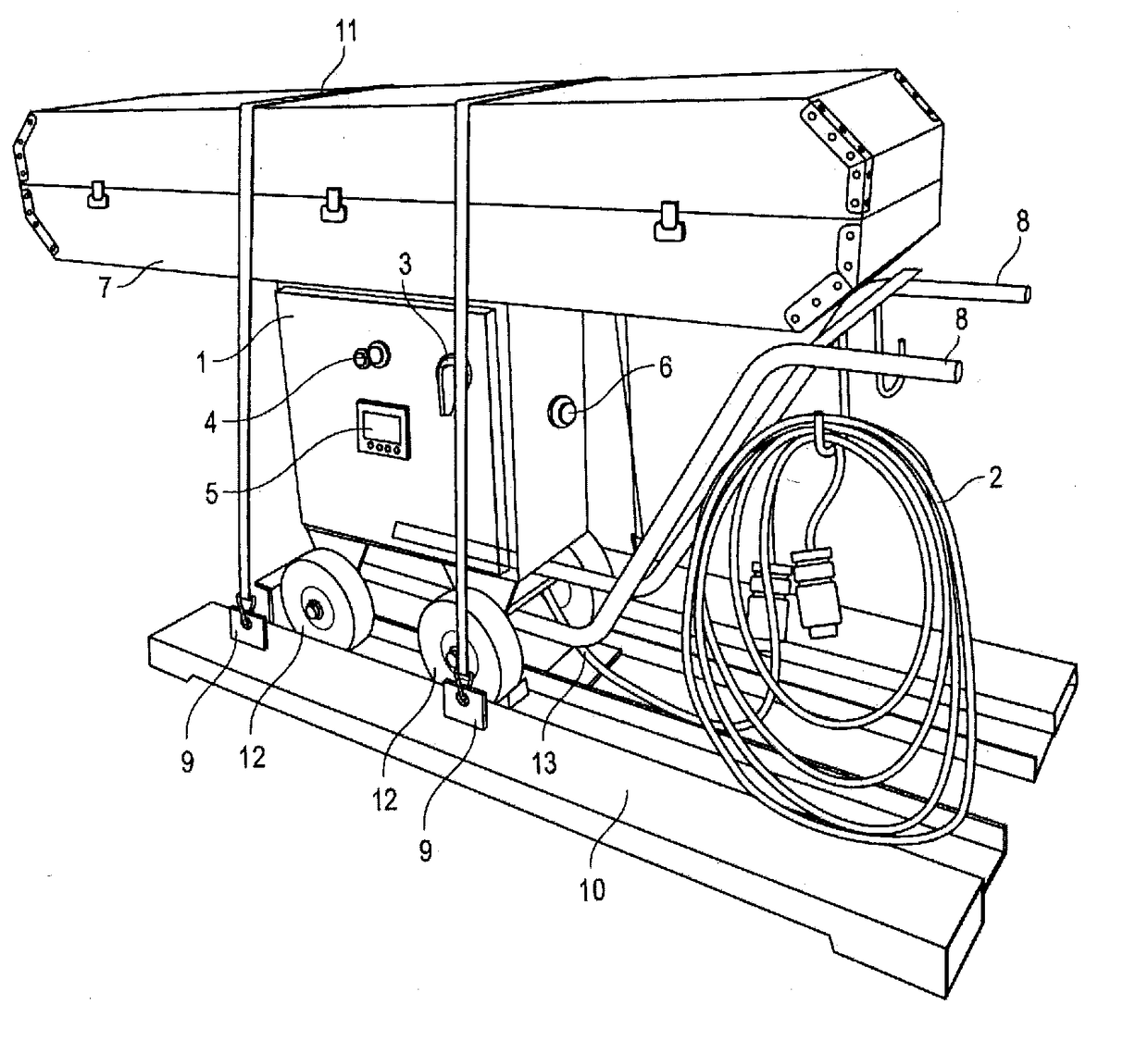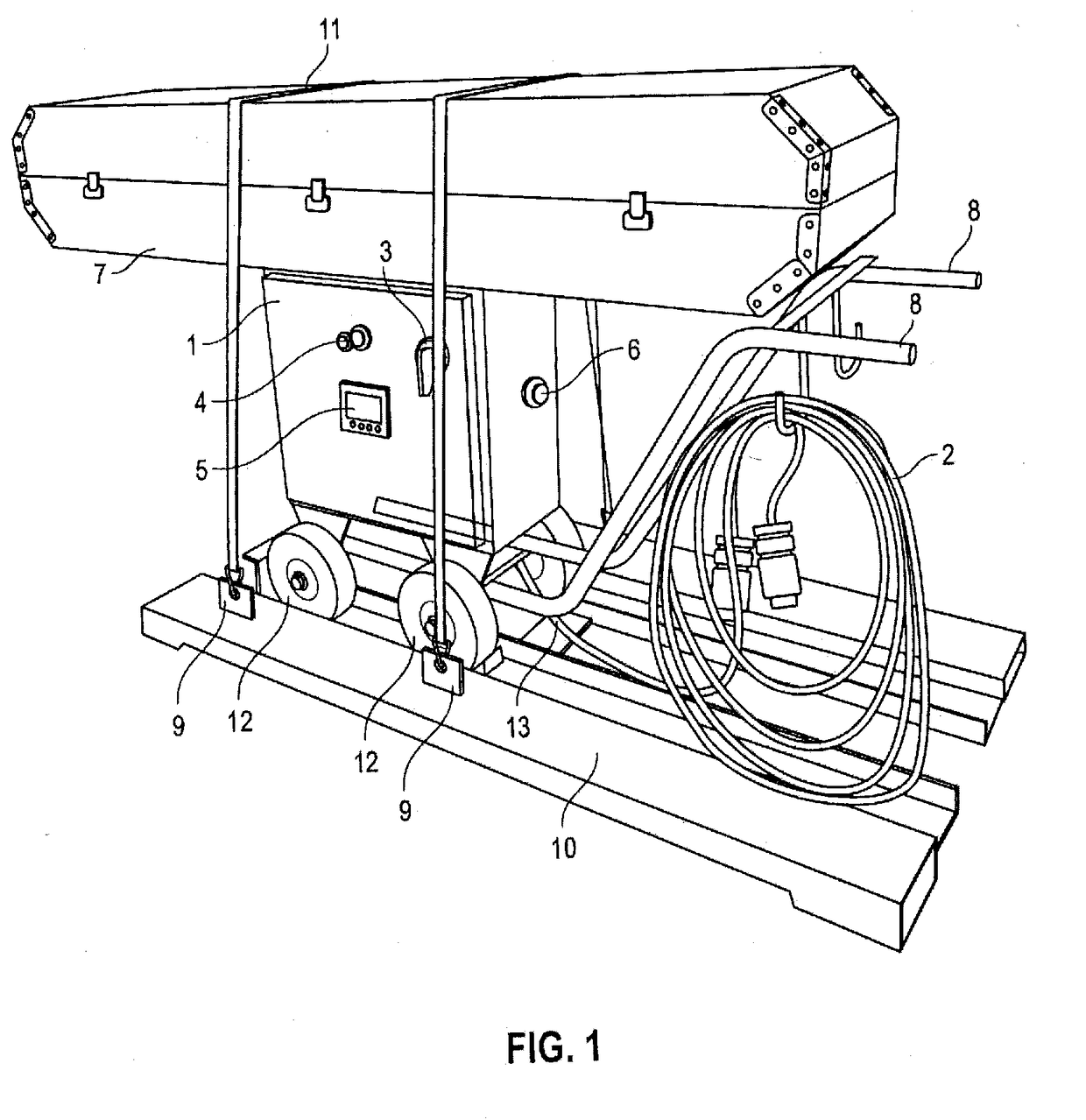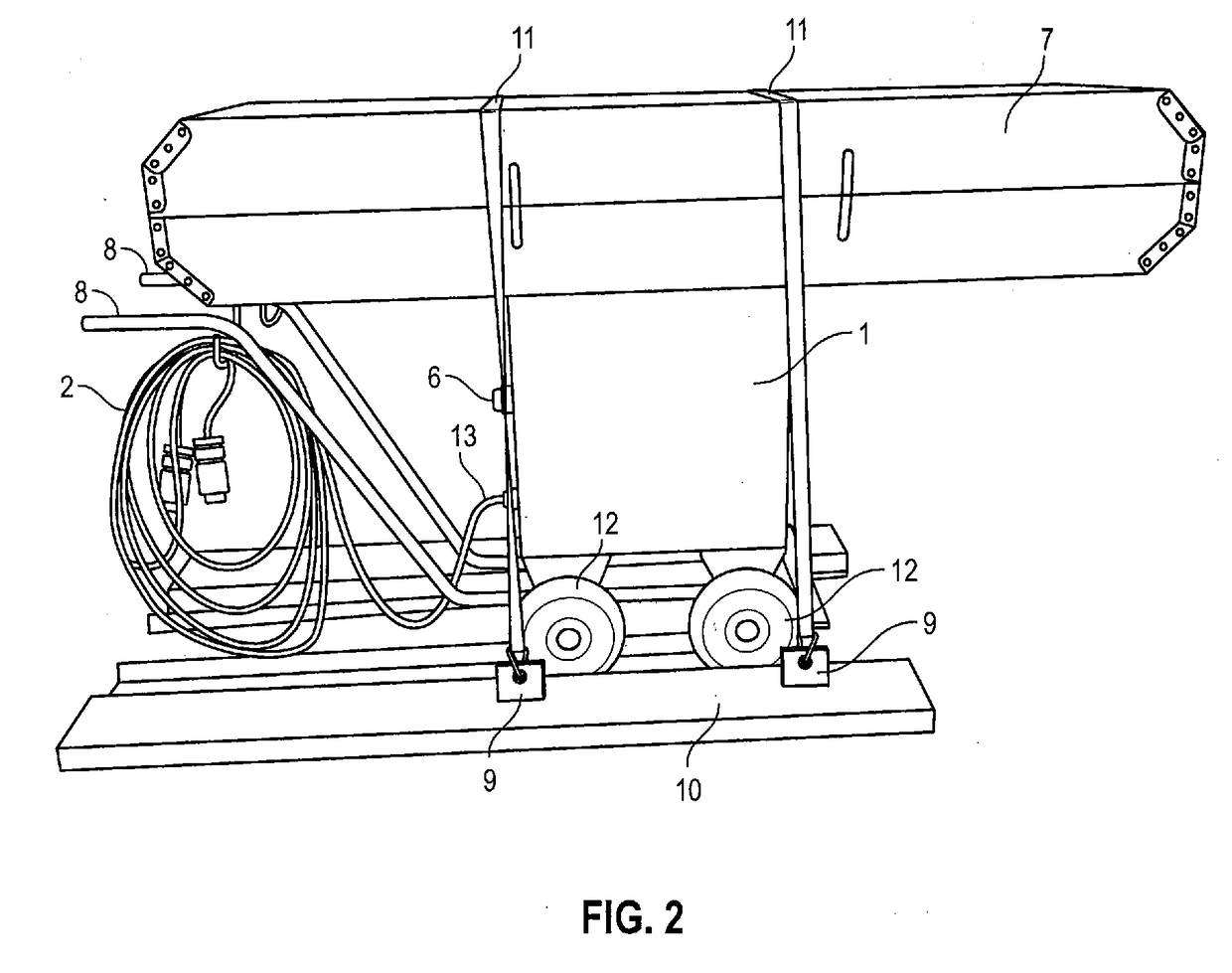UV devices, systems, and methods of making and use
a technology of ultraviolet light and disinfection device, applied in the direction of disinfection, water installations, construction, etc., can solve the problems of inability to reproduce microorganisms, large amount of water as a solvent for both solutions, and inability to use large amounts of water as solvent,
- Summary
- Abstract
- Description
- Claims
- Application Information
AI Technical Summary
Benefits of technology
Problems solved by technology
Method used
Image
Examples
example 1
ng Killing of Microorganisms
[0715]The following provides steps to calculate UV intensities and hence time of sterilization needed to kill a desired microorganism using compositions, algorithms and methods of the present invention. The required Energy Dosage of UV Radiation (UV Dose) in μWs / cm2 (microwatts / cm2) needed for kill factor is provided herein in Tables 1-5. Per algorithm provided herein and to determine the UV intensity (UV dosage) on a surface at various distances from a germicidal UV light source a user divides the radiant energy (shown in microwatts per square centimeter at one meter distance) by the intensity factor as shown in Table 9 below.
TABLE 9Intensity Factors (American Ultraviolet Company, Lebanon, IN 46052, USA)Distance from UV Lamp2″3″4″6″8″10″12″14″18″24″Intensity Factor 32.322.818.612.99.857.946.485.353.62.33Distance from UV Lamp36″39.37″ (1 meter)48″60″80″100″120″Intensity Factor1.221.00.6810.45202560.1690.115
[0716]Using a UV light source with an output of 1...
example 3
ve Efficacy Trial of Sanitization Using UVC (UVT-4 Model) Versus Steam and Peracetic Acid on Reduction of Microbial Populations on Stainless Steel Tanks
[0727]A comparative efficacy trial on three different tank sanitation methods was conducted at a winery in St. Helena, Calif. The objective of this comparative trial was to evaluate the sanitization efficacies of various sanitizers (Steam, Peracetic Acid (PAA), and Ultraviolet Light C (UVC)) on the reduction of wine and environmental microbe populations on interior surfaces of stainless steel production tanks. The trial was conducted on four different tanks. Briefly, the methodology of the trial was as follows: (i) tanks were emptied of wine; (ii) pre-treatment microbiological swab samples were collected from the ceiling, wall, and floor of each tank; (iii) tanks underwent appropriate sanitation protocol; (iv) post-treatment microbiological swab samples were collected from ceiling, wall, and floor of each tank; (v) microbiological sw...
example 4
ve Efficacy Trial of Sanitization Using UVC (UVT-4 Model) Versus Chlorine Dioxide on Reduction of Microbial Populations on Stainless Steel Tanks
[0741]A comparative efficacy trial on two different tank sanitization methods (chlorine dioxide, C102 (ozone) and UVC (UVT-4 Model)) was conducted at a winery in Sonoma, Calif. The objective of this comparative trial was to evaluate the sanitation efficacies of two different sanitizers on the reduction of wine and environmental microbe populations on interior surfaces of stainless steel production tanks.
[0742]The trial was conducted on four different tanks with two of the tanks receiving treatment with UVC (UVT-4 Model) and two tanks receiving treatment with ozone (chlorine dioxide). Briefly, the methodology of the trial was as follows: (i) tanks were emptied of wine; (ii) pre-treatment microbiological swab samples were collected from the ceiling, wall, and floor of each tank; (iii) tanks underwent appropriate sanitation protocol; (iv) post-...
PUM
| Property | Measurement | Unit |
|---|---|---|
| angle | aaaaa | aaaaa |
| wavelength | aaaaa | aaaaa |
| length | aaaaa | aaaaa |
Abstract
Description
Claims
Application Information
 Login to View More
Login to View More - R&D
- Intellectual Property
- Life Sciences
- Materials
- Tech Scout
- Unparalleled Data Quality
- Higher Quality Content
- 60% Fewer Hallucinations
Browse by: Latest US Patents, China's latest patents, Technical Efficacy Thesaurus, Application Domain, Technology Topic, Popular Technical Reports.
© 2025 PatSnap. All rights reserved.Legal|Privacy policy|Modern Slavery Act Transparency Statement|Sitemap|About US| Contact US: help@patsnap.com



